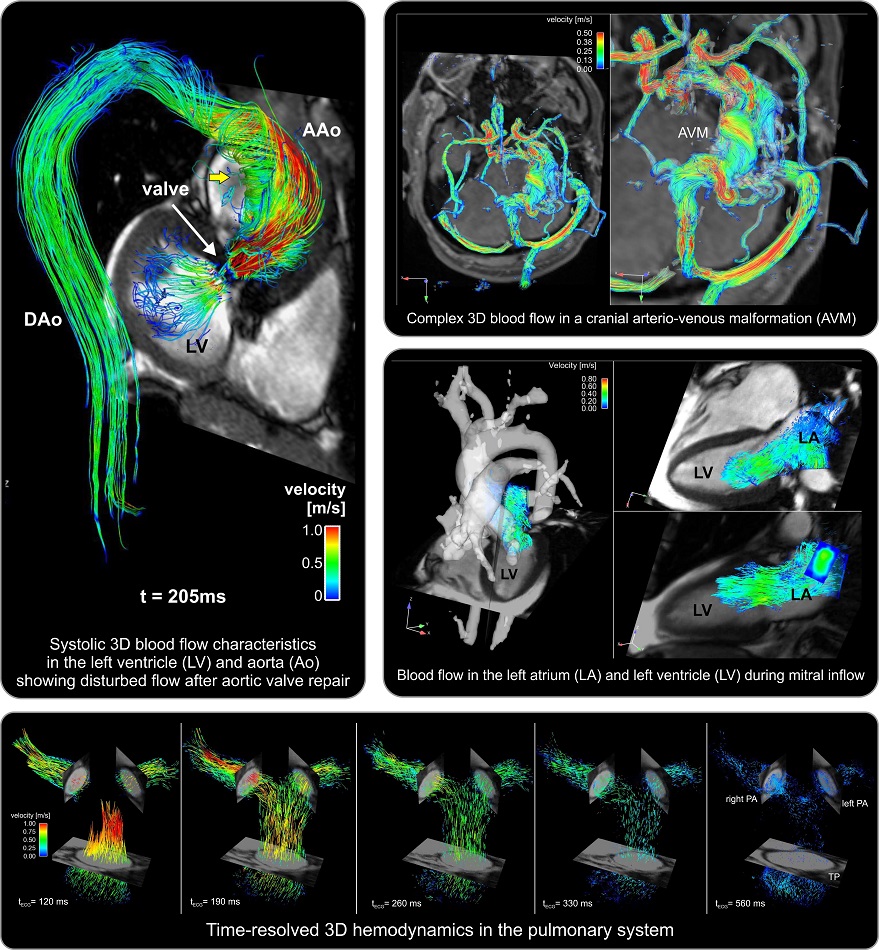4D MRI Could Improve Clinical Assessment of Heart Blood Flow Abnormalities
Posted on 19 Mar 2024
Magnetic Resonance Imaging (MRI) utilizes magnets and pulsed radio frequency to generate computer images for screening and diagnosing medical conditions. 4D flow MRI, an advanced imaging technique, provides a more detailed view of the heart and the aorta by adding movement as a fourth dimension. This allows healthcare professionals to see how blood moves through the cardiovascular system in detail and identify any potential issues that may require further examination. Previous studies have indicated that evaluating blood stasis and peak velocity in the left atrium and its appendage using 4D flow could aid in identifying impaired blood flow, which increases the risk of forming blood clots. However, the relationship between conventional volumetric and functional left atrium parameters with flow characteristics in the left atrium and left atrium appendage had not been fully investigated until now.
Now, a study by researchers from Northwestern University (Evanston, IL, USA) has discovered that combining whole-heart 4D flow with short-axis cine MRI can identify characteristics linked to poor blood flow in the heart’s left atrial chamber. These insights could enable doctors to more accurately diagnose abnormalities in heart blood flow. The study aimed to explore whether the relation between 4D flow parameters and conventional volumetric-based left atrial assessment could help better identify participants with impaired flow characteristics and improve the understanding of mechanistic relationships between left atrial flow and volumetric parameters. The study involved data from 158 patients all of whom underwent prospective cardiac MRI exams consisting of whole-heart 4D flow and short-axis cine imaging. The analysis of the 4D flow MRI involved manual 3D segmentation of the left atrium and its appendage to measure peak velocity and blood stasis.

The team utilized short-axis cine data to define left atrial contours, extracting 3D–based left atrial volume measures to calculate left atrial emptying fractions [total LA emptying fractions (LAEFtotal), active LA emptying fraction (LAEFactive), and passive LA emptying fraction (LAEFpassive)]. They also measured left atrial stasis, left atrial peak velocity, left atrium appendage stasis, and left atrium appendage peak velocity flow parameters to detect any connection with left atrial volume and left atrial emptying fraction. The researchers found that a one-unit increase in LAEFtotal was related to reduced left atrial stasis (p < 0.001) and higher LAEFactive was related to increased left atrial peak velocity (p < 0.001). They also found that increased minimum left atrial volume was most likely related to impaired left atrial appendage flow and lower left atrial appendage peak velocity.
"Increased absolute and indexed minimum left atrial volume was most closely associated with impaired left atrial flow, which is a known risk factor for left atrial thrombus formation and potentially ischemic stroke," the researchers concluded. "Thus, 3D-based left atrial volume quantification may be a useful surrogate measure for left atrial and left atrial appendage flow abnormalities in future studies."
Related Links:
Northwestern University














